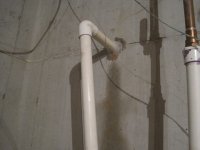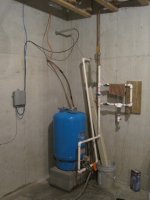Ah. Well there ya go. (I'm Dave BTW). But that was what had me confused. I see now it was something you had done for the camper, which makes sense. Just checking, as these things vary around the country.
You are still on track.
For the FP... Have you checked the moisture content of the wood you are burning? I recall you bought a moisture meter. If you are in for a fight with the stove company, then that is very good info to have. It is pretty typical to "blame the other guy" aka the "wood is wet" in your case. You need to remove those arguments from their repertoire. Of course, the way to do this is:
1. Measure the MC of your firewood on several sticks. Average that out.
2. Call them and tell them your issue.
3. Wait for them to tell you "your wood is too wet"
4. Ask "Well then, What is the correct %MC of firewood to burn in this FP"
5. Ask how you measure that?
6. Destroy them when you say "I used a moisture meter and my wood is measuring 16% with a 2% SD over 25 pieces, all of which I measured just prior to burning."
7. Wait through the stunned silence while the guy figures he needs to escalate....
Seriously, you have seen this in your work life, I am sure. Everyone tries to point the finger at someone else. Predict those finger pointings and cut them off. My guess is they have two options: 1. the wood, 2. the Install. You need to destory them on the first point so they know they are not dealing with Jeb Rube (aka "would you like me to send you the spreadsheet with the %MC distribution vs position on the log including standard deviations and the log normal distribution?" That should light them up

). Then have as much as you can on point #2, which they will now home in on. "Cause it can't be their fault...:laughing: The finally ask if they will do the right thing and send out a tech to figure it out and add to their technical knowledge database.


